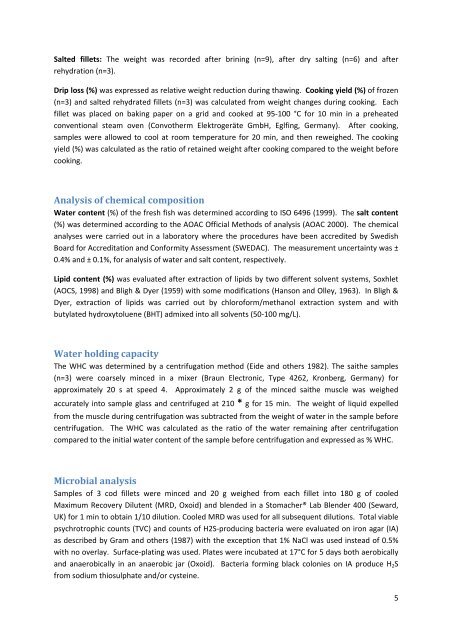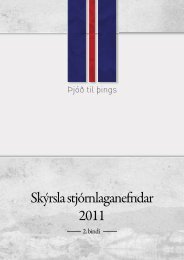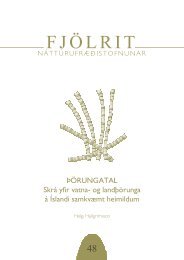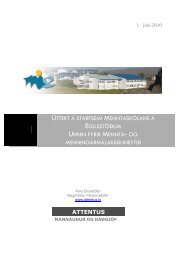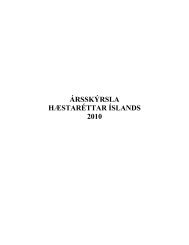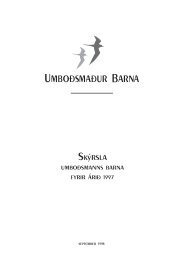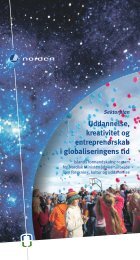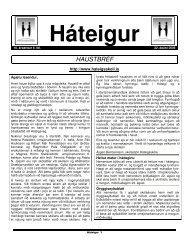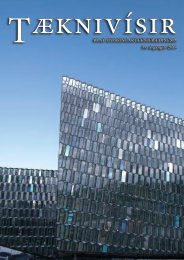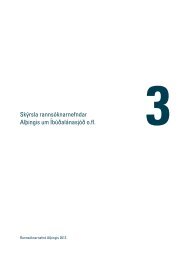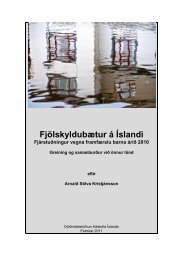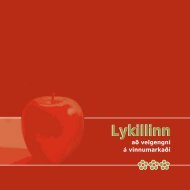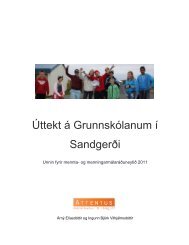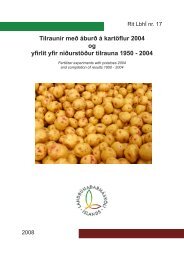Addition of collagen to heavy salted and lightly salted, chilled and ...
Addition of collagen to heavy salted and lightly salted, chilled and ...
Addition of collagen to heavy salted and lightly salted, chilled and ...
You also want an ePaper? Increase the reach of your titles
YUMPU automatically turns print PDFs into web optimized ePapers that Google loves.
Salted fillets: The weight was recorded after brining (n=9), after dry salting (n=6) <strong>and</strong> after<br />
rehydration (n=3).<br />
Drip loss (%) was expressed as relative weight reduction during thawing. Cooking yield (%) <strong>of</strong> frozen<br />
(n=3) <strong>and</strong> <strong>salted</strong> rehydrated fillets (n=3) was calculated from weight changes during cooking. Each<br />
fillet was placed on baking paper on a grid <strong>and</strong> cooked at 95‐100 °C for 10 min in a preheated<br />
conventional steam oven (Convotherm Elektrogeräte GmbH, Eglfing, Germany). After cooking,<br />
samples were allowed <strong>to</strong> cool at room temperature for 20 min, <strong>and</strong> then reweighed. The cooking<br />
yield (%) was calculated as the ratio <strong>of</strong> retained weight after cooking compared <strong>to</strong> the weight before<br />
cooking.<br />
Analysis <strong>of</strong> chemical composition<br />
Water content (%) <strong>of</strong> the fresh fish was determined according <strong>to</strong> ISO 6496 (1999). The salt content<br />
(%) was determined according <strong>to</strong> the AOAC Official Methods <strong>of</strong> analysis (AOAC 2000). The chemical<br />
analyses were carried out in a labora<strong>to</strong>ry where the procedures have been accredited by Swedish<br />
Board for Accreditation <strong>and</strong> Conformity Assessment (SWEDAC). The measurement uncertainty was ±<br />
0.4% <strong>and</strong> ± 0.1%, for analysis <strong>of</strong> water <strong>and</strong> salt content, respectively.<br />
Lipid content (%) was evaluated after extraction <strong>of</strong> lipids by two different solvent systems, Soxhlet<br />
(AOCS, 1998) <strong>and</strong> Bligh & Dyer (1959) with some modifications (Hanson <strong>and</strong> Olley, 1963). In Bligh &<br />
Dyer, extraction <strong>of</strong> lipids was carried out by chlor<strong>of</strong>orm/methanol extraction system <strong>and</strong> with<br />
butylated hydroxy<strong>to</strong>luene (BHT) admixed in<strong>to</strong> all solvents (50‐100 mg/L).<br />
Water holding capacity<br />
The WHC was determined by a centrifugation method (Eide <strong>and</strong> others 1982). The saithe samples<br />
(n=3) were coarsely minced in a mixer (Braun Electronic, Type 4262, Kronberg, Germany) for<br />
approximately 20 s at speed 4. Approximately 2 g <strong>of</strong> the minced saithe muscle was weighed<br />
accurately in<strong>to</strong> sample glass <strong>and</strong> centrifuged at 210 * g for 15 min. The weight <strong>of</strong> liquid expelled<br />
from the muscle during centrifugation was subtracted from the weight <strong>of</strong> water in the sample before<br />
centrifugation. The WHC was calculated as the ratio <strong>of</strong> the water remaining after centrifugation<br />
compared <strong>to</strong> the initial water content <strong>of</strong> the sample before centrifugation <strong>and</strong> expressed as % WHC.<br />
Microbial analysis<br />
Samples <strong>of</strong> 3 cod fillets were minced <strong>and</strong> 20 g weighed from each fillet in<strong>to</strong> 180 g <strong>of</strong> cooled<br />
Maximum Recovery Dilutent (MRD, Oxoid) <strong>and</strong> blended in a S<strong>to</strong>macher® Lab Blender 400 (Seward,<br />
UK) for 1 min <strong>to</strong> obtain 1/10 dilution. Cooled MRD was used for all subsequent dilutions. Total viable<br />
psychrotrophic counts (TVC) <strong>and</strong> counts <strong>of</strong> H2S‐producing bacteria were evaluated on iron agar (IA)<br />
as described by Gram <strong>and</strong> others (1987) with the exception that 1% NaCl was used instead <strong>of</strong> 0.5%<br />
with no overlay. Surface‐plating was used. Plates were incubated at 17°C for 5 days both aerobically<br />
<strong>and</strong> anaerobically in an anaerobic jar (Oxoid). Bacteria forming black colonies on IA produce H 2 S<br />
from sodium thiosulphate <strong>and</strong>/or cysteine.<br />
5


